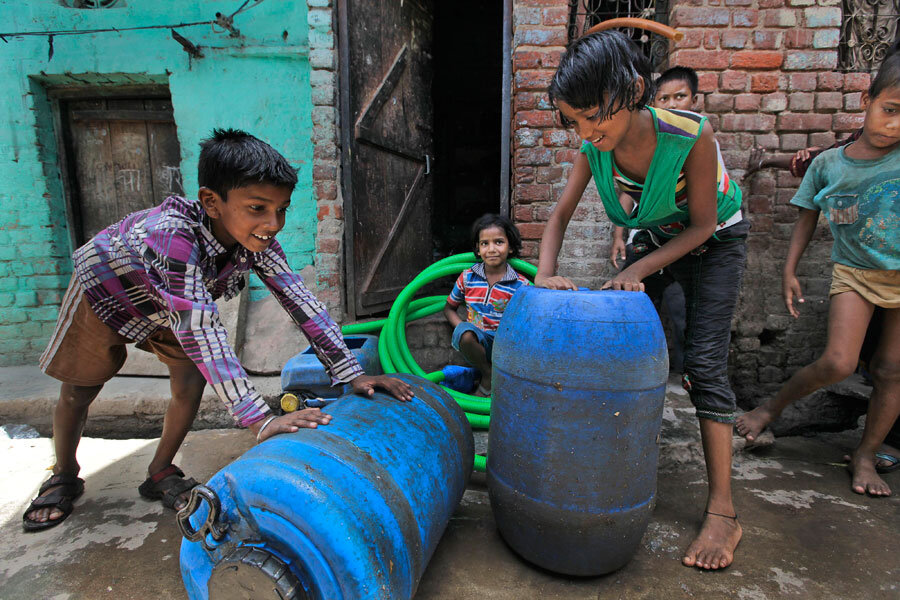Fresh water crisis: Four billion people face water scarcity, says study
Loading...
Fresh water on Earth is scarce and getting scarcer – we know that. In 2015 the World Economic Forum ranked "water crises" as the top risk facing the planet.
But authors of a recent report published Friday in the journal Science Advances say previous studies have underestimated the severity of water scarcity around the world. Instead of impacting around two billion people as researchers previously suggested, it’s more along the lines of four billion, say Dr. Mesfin Mekonnen and Dr. Arjen Hoekstra at the University of Twente in Enschede, Netherlands.
So how has previous research been so off? It relied on annual averages, say the authors.
“Most of the previous water scarcity studies are done on an annual basis, which hides the actual variability within a year,” co-author Dr. Mekonnen, a postdoctoral researcher at the University of Twente, tells The Christian Science Monitor in an email Thursday. To understand water scarcity on the global level, Mekonnen and Hoekstra assessed local "blue water scarcity," or the amount of freshwater that is withdrawn and not returned, on a monthly level.
But these four billion people are not facing water scarcity all year round, notes Mekonnen, instead it’s more along the lines of one month a year.
“When you average over the whole year, you miss that one month where [a] large number of people face water scarcity,” says Mekonnen. “Before we thought only [a] small number of people face severe water scarcity,” but a larger population’s few, difficult months were skewing the annual average.
“Water scarcity generally occurs only during part of the year, when there is a mismatch between water availability and demand,” explains Mekonnen. Only half a billion people actually experience water scarcity for the entire year.
The truth about water scarcity’s impact is important, say the authors, because informed consumers are more likely to “demand transparency about the water consumption and pollution underlying consumer products from business and governments,” Dr. Hoekstra explains in a paper published last year. And the most water-demanding products are not always the most obvious.
“Little interest in water has been shown in the meat and dairy sectors, which is surprising given the fact that the meat and dairy sectors contribute more than a quarter to the global water footprint of humanity,” says Hoekstra.
Their study also breaks down a presumed barrier between developed and underdeveloped countries, instead suggesting water scarcity may be more correlated to population levels.
In their study, Mekonnen and Hoekstra suggest India and China, the two most populated countries, are home to up to half of the total four-billon people experiencing water scarcity. Other significant populations facing severe water scarcity live in Bangladesh, the United States, Pakistan, Nigeria, and Mexico – five of the 10 most populated in the world.
And a detailed breakdown of water-stressed months makes mitigation efforts more realistic, say Mekonnen and Hoekstra.
“Governments should put a cap on water footprints, per river basin and per month, to ensure that water consumption doesn’t exceed maximum sustainable levels,” Mekonnen tells The Monitor. “Without proper measurement of the extent of the water scarcity, it will be difficult to design proper response strategies to address the problem. By measuring the water scarcity level properly, we are able to assess the human, economic, social, and environmental costs.”






